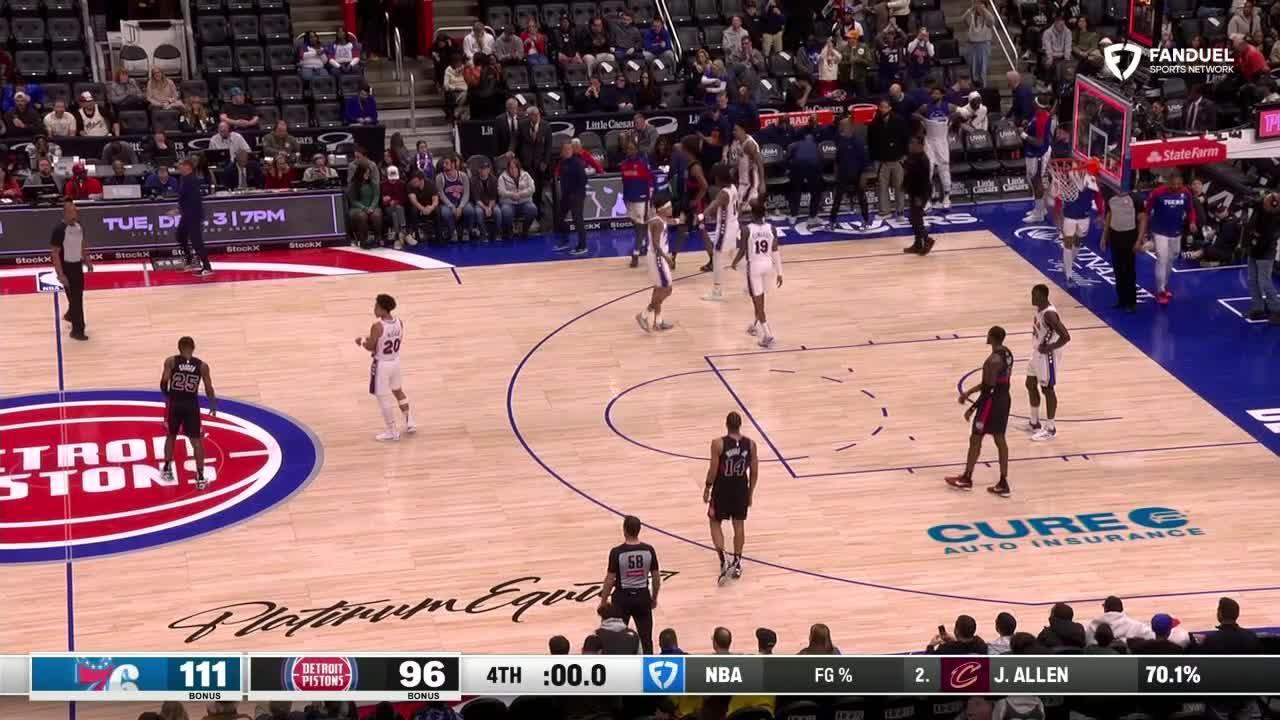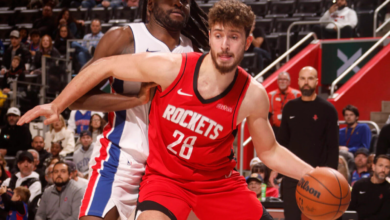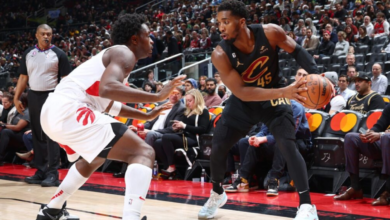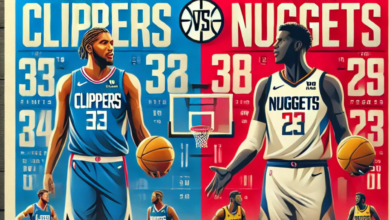The Detroit Pistons and the Philadelphia 76ers have both had their moments of glory in the NBA. These two teams have been at the center of numerous memorable matchups, and each game presents an exciting opportunity to analyze individual and team performances. Understanding player statistics in these head-to-head battles can provide a clearer picture of how each team’s strengths and weaknesses play out on the court. In this article, we’ll delve into the latest matchup between the Detroit Pistons and the 76ers, breaking down key player stats, analyzing game-changing performances, and comparing individual contributions.
Game Overview
Summary of the Match
The Detroit Pistons squared off against the Philadelphia 76ers in an exhilarating game that captured the attention of NBA fans. Held at the Wells Fargo Center, this game was a true testament to the ongoing evolution of both teams. The final score reflected a tight contest, with the 76ers securing the win, but the Pistons displayed commendable resilience throughout. This article will dive into the player statistics that were key to determining the game’s outcome.
The match showcased high-intensity basketball, with both teams pushing their limits on offense and defense. The Pistons, while struggling at times to match the 76ers’ offensive prowess, showed flashes of brilliance, especially in the second half. Philadelphia, on the other hand, was able to capitalize on their experience and depth, controlling the game with precision shooting and solid defense.
Team Performance Comparison
Both teams had varying degrees of success in different aspects of the game. The Pistons shot 45% from the field, while the 76ers posted a slightly higher 48%, reflecting their efficient offense. A significant difference was observed in the three-point shooting department, with the Pistons shooting just 32% from beyond the arc compared to the 76ers’ 38%, which proved pivotal in giving Philadelphia an edge.
Rebounding was another area where the 76ers outshone the Pistons. With a 47-39 advantage on the boards, Philadelphia controlled the glass and limited the Pistons’ second-chance opportunities. In terms of assists, the 76ers had a clear advantage with 28 compared to Detroit’s 21, showcasing their ball movement and teamwork.
However, it wasn’t all one-sided. The Pistons played with a grit that saw them make timely plays in transition and capitalize on fast breaks, but they struggled to consistently create offensive flow against the 76ers’ defense.
Player Statistics: Detroit Pistons

Star Performers
The Detroit Pistons had a few standout players who rose to the occasion despite the loss. The primary offensive threat for the Pistons was their star player, who finished the game with 28 points, 8 rebounds, and 5 assists. Shooting at an efficient 50% from the field, this player showed why they are the team’s cornerstone. Their performance kept the Pistons in the game and made it competitive, even when it looked like the 76ers might pull away.
Another notable player for the Pistons was their Detroit Pistons young guard, who showed flashes of brilliance with 22 points and 6 assists. While still growing in his role, his agility and quick decision-making gave the Pistons a spark, especially during critical moments when they were trying to close the gap. However, consistency remains a key factor for his development.
Emerging Talents
The Pistons’ bench was also a contributing factor to their performance, with some young players stepping up in moments of need. A rookie forward who had limited minutes in previous games took advantage of the opportunity, contributing 10 points and 4 rebounds in just 18 minutes of play. His energy and hustle were noticeable, and he provided the team with a much-needed boost during a few stretches where the game seemed to slip away.
The Pistons are in the process of rebuilding, and the contribution of their younger players is vital for their future success. This game highlighted the need for continued development and trust in the bench players who can offer depth and a change of pace.
Areas for Improvement
Despite a valiant effort, there are areas where the Pistons need improvement. One glaring issue was their shooting efficiency, especially from three-point range. The Pistons struggled to find a rhythm from beyond the arc, which hindered their ability to keep pace with the 76ers’ perimeter shooting. Additionally, their defense at times appeared disorganized, especially in transition defense, allowing the 76ers easy fast-break points.
Another aspect where the Pistons fell short was their lack of depth. While the starters performed admirably, the bench did not provide as much of an impact as it could have. More consistent scoring from the second unit will be key if the Pistons are to compete with top teams like the 76ers.
Player Statistics: Philadelphia 76ers
Star Performers
The Philadelphia 76ers’ top performer was undoubtedly their MVP-caliber player, who dominated the game with 35 points, 11 rebounds, and 6 assists. His performance was a key factor in Philadelphia’s victory, as he was involved in almost every aspect of the game. Whether it was hitting clutch shots, making pivotal assists, or grabbing crucial rebounds, he proved why he is one of the league’s top players.
Supporting him was the 76ers’ star center, who finished with a double-double of 18 points and 13 rebounds. His presence in the paint was felt throughout the game, and he controlled the boards, limiting the Pistons’ second-chance opportunities. The chemistry between these two players was evident, and it played a significant role in Philadelphia’s success.
Emerging Talents
While the 76ers have their established stars, their younger players also showed up in this game. A young shooting guard contributed 15 points off the bench, adding an extra dimension to the offense. His ability to stretch the floor and hit timely three-pointers gave the 76ers the spacing they needed to operate effectively.
Additionally, a rookie forward’s defense was outstanding, contributing 3 blocks and 2 steals. His tenacity on the defensive end disrupted the Pistons’ offensive flow and was one of the reasons for the 76ers’ success in limiting Detroit’s shooting.
Areas for Improvement
Although the 76ers secured the win, there were still areas for improvement. Their free throw shooting was subpar, with the team converting only 70% from the line. In close games, this can be a critical flaw. Another area of concern was their bench production. While a few players contributed, there were stretches where the second unit failed to sustain the momentum set by the starters.
The 76ers also need to refine their ball-handling during high-pressure moments. There were instances where turnovers allowed the Pistons to capitalize on fast breaks, and this is something the 76ers will need to address as the season progresses.
Head-to-Head Player Comparisons
Key Matchups
The game saw intriguing head-to-head matchups, particularly between the two star players. The battle between the Pistons’ primary scorer and the 76ers’ MVP-caliber player was one of the most exciting aspects of the game. Although the Pistons’ player performed admirably, the 76ers’ star was able to take control in crucial moments, particularly with his scoring in the second half.
Another key matchup was in the paint, where the 76ers’ center went toe-to-toe with the Pistons’ big men. The 76ers had the advantage in the paint, but the Pistons’ players fought hard to secure key rebounds and block shots, limiting Philadelphia’s second-chance points.
Statistical Comparisons
When comparing the statistics of the star players, the 76ers had a clear advantage in terms of shooting efficiency and overall contribution. While the Pistons’ star player had an impressive game, the 76ers’ MVP-caliber player was more effective in creating scoring opportunities for himself and his teammates.
Defensively, the 76ers’ big men dominated the paint, contributing significantly to the team’s 47 rebounds. In contrast, the Pistons struggled to match up physically, allowing the 76ers to capitalize on their size advantage.
Game-Changing Moments
The game was filled with pivotal moments, but one of the most game-changing was a late three-pointer by the 76ers’ young shooting guard that broke the Pistons’ momentum. This shot came at a crucial time, increasing the lead and preventing the Pistons from making a comeback.
Additionally, a series of fast-break points in the final minutes by the 76ers helped seal the victory. The Pistons were unable to stop these fast-break opportunities, which ultimately gave Philadelphia the win.
Conclusion
The Detroit Pistons vs. Philadelphia 76ers matchup provided valuable insights into both teams’ current form. The 76ers’ star power, efficient offense, and defensive dominance were key factors in their victory. However, the Pistons showed promise, particularly with the performance of their young talents. For the Pistons to compete at a higher level, they must improve their shooting consistency and depth. On the other hand, the 76ers must continue to refine their bench production and free throw shooting.
Both teams have their strengths and areas for improvement, but this game certainly demonstrated why the 76ers remain a top contender in the Eastern Conference. Meanwhile, the Pistons are steadily building for the future, and their growth will be an exciting storyline throughout the season.
FAQs
- Who were the top scorers for the Pistons and 76ers in the match?
The Pistons’ top scorer was their star player with 28 points, while the 76ers’ MVP-caliber player scored 35 points. - How did bench players contribute to each team’s performance?
The Pistons’ bench provided critical energy, especially from a rookie forward. The 76ers’ bench player hit timely three-pointers to secure the win. - What were the most impressive individual stats from the game?
The standout performances came from the 76ers’ star player, with 35 points, 11 rebounds, and 6 assists, and the Pistons’ star player, who added 28 points and 8 rebounds. - Which players underperformed and why?
A few Pistons players struggled with shooting efficiency, particularly from three-point range, which contributed to their loss. - How did team dynamics influence the overall outcome of the game?
The 76ers’ experience and depth were key in maintaining their lead, while the Pistons’ lack of consistency and depth contributed to their loss. - Are there any upcoming games between the Pistons and 76ers?
Fans can look forward to more exciting matchups as the season progresses, with both teams continuing to evolve and refine their strategies. - What trends can we infer from the players’ stats for future matches?
The 76ers’ dominance in the paint and perimeter shooting will continue to be a strength, while the Pistons will need to focus on improving their shooting consistency and bench depth.
You May Also Read:https://techlivenews.co.uk/76ers-vs-lakers-match-player-stats/




